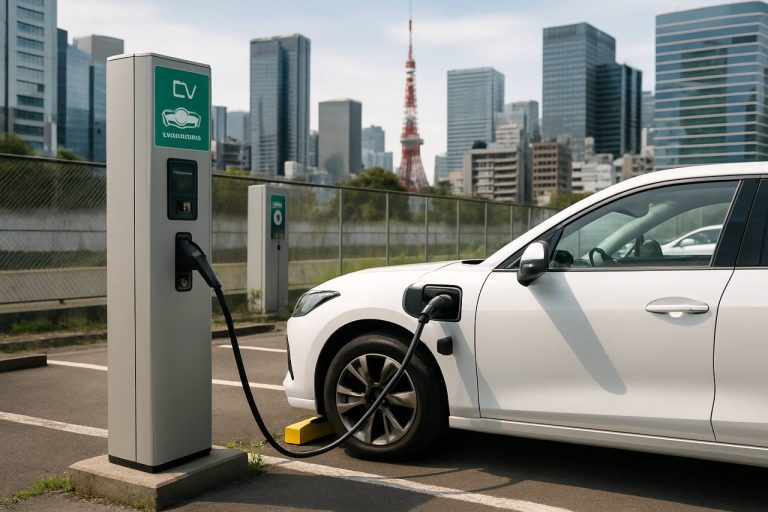
- Engineers are developing advanced liquid hydrogen storage systems for aviation, offering a promising solution to significantly reduce aircraft carbon emissions.
- Liquid hydrogen, with its high energy density and near-zero emissions, could enable long-range, zero-carbon flights for large commercial jets.
- Hybrid-electric systems combining hydrogen fuel cells and superconducting generators improve efficiency and reduce the need for heavy batteries.
- Cryogenic technology and innovative composite materials are vital for safely storing and handling hydrogen at extremely low temperatures.
- Hydrogen-powered aviation aligns with global sustainability goals from organizations like IATA and inspires green technology advances in other transport sectors.
- Global efforts, including Airbus’s “ZEROe” and growing investment from the energy industry, highlight hydrogen’s critical role in decarbonizing aviation.
A blinding Florida sun ushers yet another test flight above the treetops, as engineers at the FAMU-FSU College of Engineering tinker with what may be the boldest leap in aviation since the jet engine: a liquid hydrogen storage system that could detour aviation’s catastrophic carbon footprint.
Picture a 100-passenger jet, its engines throbbing—not with kerosene, but with hydrogen so cold it verges on alien territory, liquefied at a teeth-rattling –253℃. This isn’t science fiction—it’s the architects of tomorrow’s flight suiting up to solve a fierce paradox. Hydrogen holds more energy per kilogram than any jet fuel, unleashing power that can, in theory, sweep commercial planes across continents with a whisper of emissions. The snag? Hydrogen in its natural state spreads too thin, demanding enormous tanks. Crushed into a liquid, however, it packs tightly enough to make long-haul, zero-carbon air travel a reality.
The Florida team’s approach goes further by weaving liquid hydrogen with a hybrid-electric system. Imagine a marriage of futuristic fuel cells and turbine-driven superconducting generators: a symphony of clean energy, each component reducing the burden on battery weight and slicing away emissions that once seemed unavoidable. Such systems could help the aviation industry—historically responsible for over 2% of global CO₂ emissions—shed its polluting image and deliver on sustainability targets set by organizations like the International Air Transport Association (see IATA) and the United Nations.
Yet, the promise of hydrogen isn’t just in its invisible exhaust. Rigorously managing liquid hydrogen’s volatile temperature and minimizing boil-off have long vexed aerospace engineers. Cryogenic tanks must insulate against even the most stubborn traces of heat, leveraging new composite materials and intricate control systems. Overcoming these engineering puzzles doesn’t just make hydrogen feasible for aircraft—it sets an example for greener technology in trains, trucking, and shipping.
The urgency behind this innovation reverberates beyond America’s runways. European initiatives, like Airbus’s “ZEROe” project, have similarly vaulted hydrogen to the center of their decarbonization blueprints. Even major oil and energy conglomerates are watching closely, racing to adapt as the hydrogen economy accelerates (explore more at Shell).
The deeper message emerging from these advances is clear: The clean skies of tomorrow hinge on radical reimagination—and the will to tackle science’s gnarliest riddles. As liquid hydrogen platforms inch closer to real flight, a new era of aviation comes into focus, promising a world where high-altitude journeys leave barely a trace upon the planet.
This Liquid Hydrogen Breakthrough Could Revolutionize Aviation—Discover How It Could Change Everything
Unleashing the Power of Liquid Hydrogen: The Next Frontier in Sustainable Aviation
The FAMU-FSU College of Engineering’s liquid hydrogen storage system is rapidly capturing interest across the aviation industry—and for good reason. While the source article highlights the system’s potential to revolutionize air travel, the broader implications, technical challenges, and emerging market trends are worth a deeper dive. Here’s what you need to know.
—
Additional Must-Know Facts About Hydrogen-Powered Aviation
1. Hydrogen-Powered Aircraft: A Comprehensive Overview
– Energy Density: Hydrogen contains about three times the energy per kilogram of traditional jet fuel (kerosene), but is significantly less dense by volume. Only by liquefying it at –253℃ can enough fuel be stored for long flights (Source: IEA).
– Emissions: Combusting hydrogen in turbines emits only water vapor, although at high altitudes, water vapor can contribute to contrail formation—an area actively researched for its climate effects.
– Performance Potential: Liquid hydrogen aircraft could eventually exceed the range of today’s leading commercial jets due to the fuel’s high energy content.
– Not New, but Renewed: The Soviet Union’s Tupolev Tu-155 was an experimental hydrogen-powered aircraft in the 1980s, proving feasibility decades ago.
2. Hybrid-Electric Integration: How It Works
– Fuel Cells: Convert hydrogen directly into electricity, drastically improving efficiency, especially at lower power settings.
– Turbine-Driven Generators: Superconducting generators offer high efficiency and compactness, cutting both weight and emissions further.
– Battery Reduction: By using hydrogen and electric systems in tandem, the overall battery load on the plane is significantly reduced—addressing one of the biggest hurdles in battery-powered flight.
How-To Steps & Life Hacks: Understanding Hydrogen Flight
How to Make Hydrogen Air Travel a Reality:
1. Develop lightweight, super-insulated cryogenic tanks—using advanced composites, as insulation is key for liquid hydrogen storage.
2. Integrate hybrid propulsion systems—marrying fuel cells with reduced-size turbines or electric drives.
3. Ensure airport hydrogen infrastructure—airports would need safe hydrogen production, liquefaction, and refueling capability.
4. Update regulatory certifications—FAA and EASA would need new standards for hydrogen systems.
5. Pilot real-world test flights—extensive trials for reliability, safety, and public confidence.
Life Hack: If you work in engineering or logistics, start researching the growing demand for hydrogen expertise; this field will require specialized skills by 2030.
Real-World Use Cases
– Short-Haul Flights: Early adoption will likely be in short-haul regional jets, where range and fuel storage are manageable.
– Ground Transportation: Innovations in cryogenic hydrogen storage are influencing hydrogen-powered trains, trucks, and even ferries.
– Airport Operations: Airports are becoming test beds for hydrogen refueling and storage infrastructure—laying groundwork for broader adoption.
Market Forecasts & Industry Trends
According to IATA, the aviation industry must cut emissions by 65% by 2050 to meet net-zero goals. Hydrogen-powered aircraft could contribute up to 50% of that reduction if adopted widely (Source: IATA). The hydrogen aviation market is expected to grow from near-zero today to $174 billion by 2040 (Source: MarketsandMarkets).
Reviews & Comparisons: Hydrogen vs. Other Green Aviation Technologies
– Hydrogen vs. Sustainable Aviation Fuels (SAFs):
– Hydrogen: Zero carbon emissions at point of use; requires new infrastructure.
– SAFs: Drop-in replacement for current jet fuel; lower emissions, but not zero. Production currently limited and costly.
– Hydrogen vs. Batteries:
– Hydrogen: Higher energy density, better for long-haul; complex handling.
– Batteries: Simpler, but much heavier at equivalent energy, restricting range.
Controversies & Limitations
– Hydrogen Leakage: Hydrogen molecules are tiny, prone to leaking—posing a safety and environmental risk.
– Boil-Off & Loss: Even with advanced tanks, some hydrogen can evaporate, reducing efficiency.
– Production Emissions: Most hydrogen today is made from natural gas (“grey hydrogen”); only “green hydrogen” (via renewable electrolysis) is truly zero-carbon.
– Contrail Concerns: Water vapor at high altitudes could amplify climate effects in unexpected ways.
– Infrastructure Overhaul: Airports and airlines face billions in upfront costs to refit fleets and ground facilities.
Features, Specs & Pricing
– Typical Cryogenic Tank Weight: 40% lighter with modern composites compared to legacy aluminum tanks (Source: NASA).
– Cost: Retrofitting a single large airport for hydrogen operations can cost $300 million or more.
– Safety Features: Essential systems include triple-walled tanks, redundant venting, and advanced leak detection.
Security & Sustainability
– Safety Protocols: Much of the technology borrows from space agencies (e.g., NASA) that have decades of experience handling liquid hydrogen.
– Sustainability Factor: Hydrogen, if produced via renewable energy, is essentially circular with water as the only emission.
Insights & Predictions
– First commercial hydrogen flights could operate by 2035, with regional jets (20–100 passengers) leading.
– Hydrogen hubs will form at major airports, revolutionizing not just aviation, but freight and mobility ecosystems.
Most Pressing Reader Questions, Answered
Q: How soon could I book a hydrogen-powered flight?
A: Demonstrator flights are expected in the next 5–10 years; commercial services for short-haul may follow in the 2030s.
Q: Is hydrogen really safe for air travel?
A: With proper engineering and strict handling protocols, liquid hydrogen can be safely managed—space agencies have done so for decades.
Q: Will this make air travel cheaper?
A: In the short term, flights may be pricier, but over time, hydrogen’s efficiency could lower costs as technology and production scale up.
Q: Can this technology be retrofitted to existing planes?
A: More likely, fleets will be purpose-built for hydrogen, though some modification of existing aircraft is being researched.
Actionable Recommendations & Quick Tips
– Stay informed: Visit IATA and Shell for ongoing hydrogen aviation updates.
– Up-skill: Engineering, logistics, and airport management professionals should pursue courses in hydrogen systems and sustainability practices.
– Advocate: Support public and private hydrogen infrastructure development in your community.
—
The Bottom Line
Liquid hydrogen breakthroughs are setting the stage for zero-emission flight, with hybrid-electric integration promising unprecedented efficiency. While hurdles remain—from infrastructure to scale and safety—the sustainable aviation revolution is fast approaching. Prepare now: the hydrogen era is almost here, and those who adapt early will soar.



